
How to Use 3.3V Regulator: Examples, Pinouts, and Specs
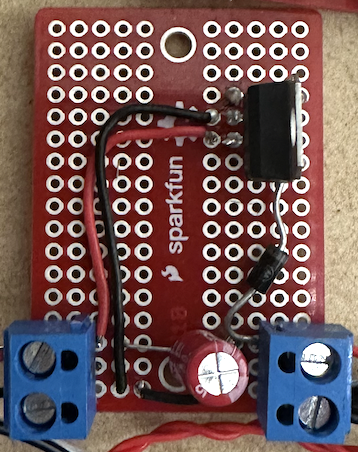
 Design with 3.3V Regulator in Cirkit Designer
Design with 3.3V Regulator in Cirkit DesignerIntroduction
A 3.3V regulator is an electronic component designed to provide a stable and consistent output voltage of 3.3 volts. It ensures that variations in input voltage or load conditions do not affect the output voltage, making it an essential component in power supply circuits. This regulator is widely used in applications where sensitive electronic devices, such as microcontrollers, sensors, and communication modules, require a reliable 3.3V power source for optimal operation.
Explore Projects Built with 3.3V Regulator
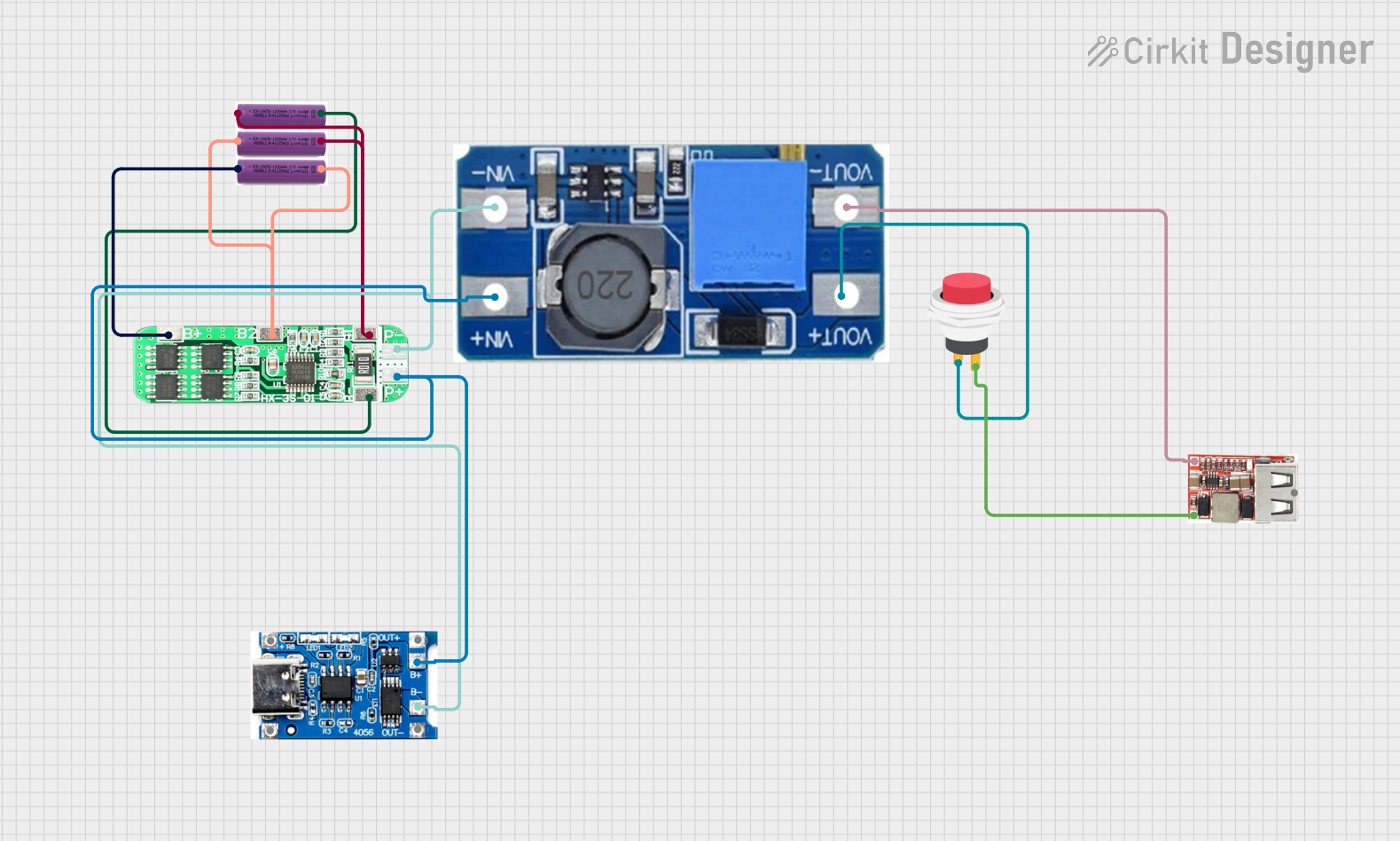
 Open Project in Cirkit Designer
Open Project in Cirkit Designer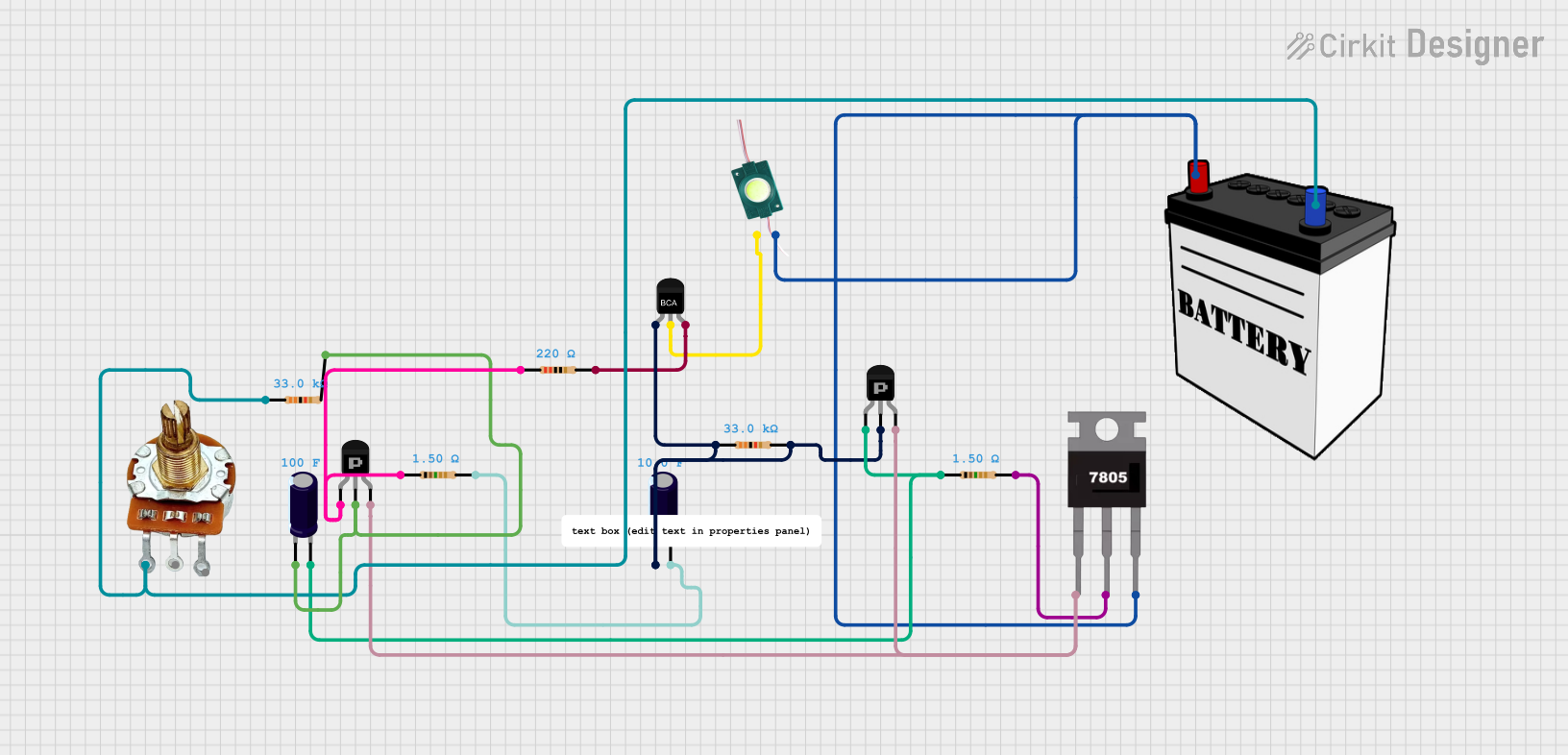
 Open Project in Cirkit Designer
Open Project in Cirkit Designer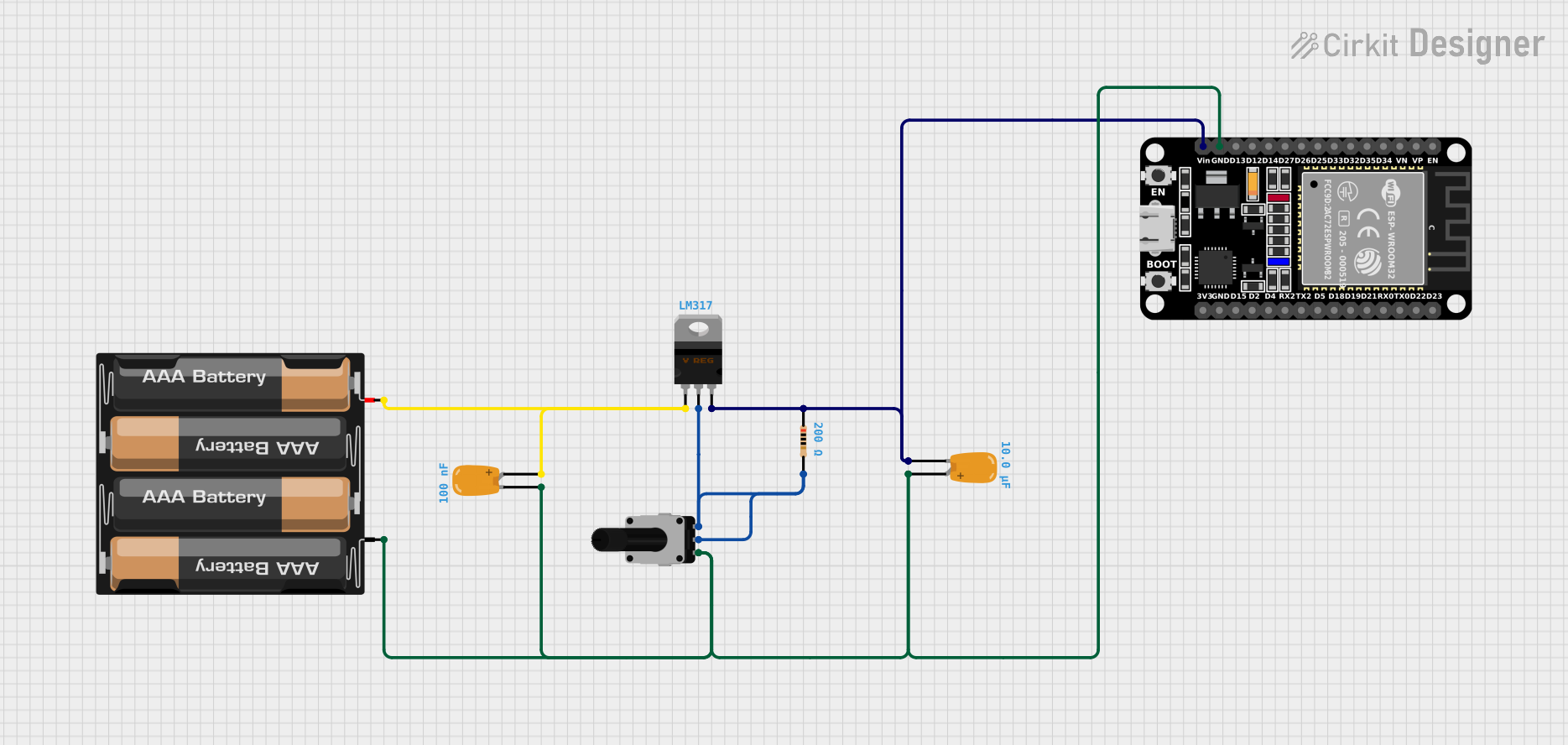
 Open Project in Cirkit Designer
Open Project in Cirkit Designer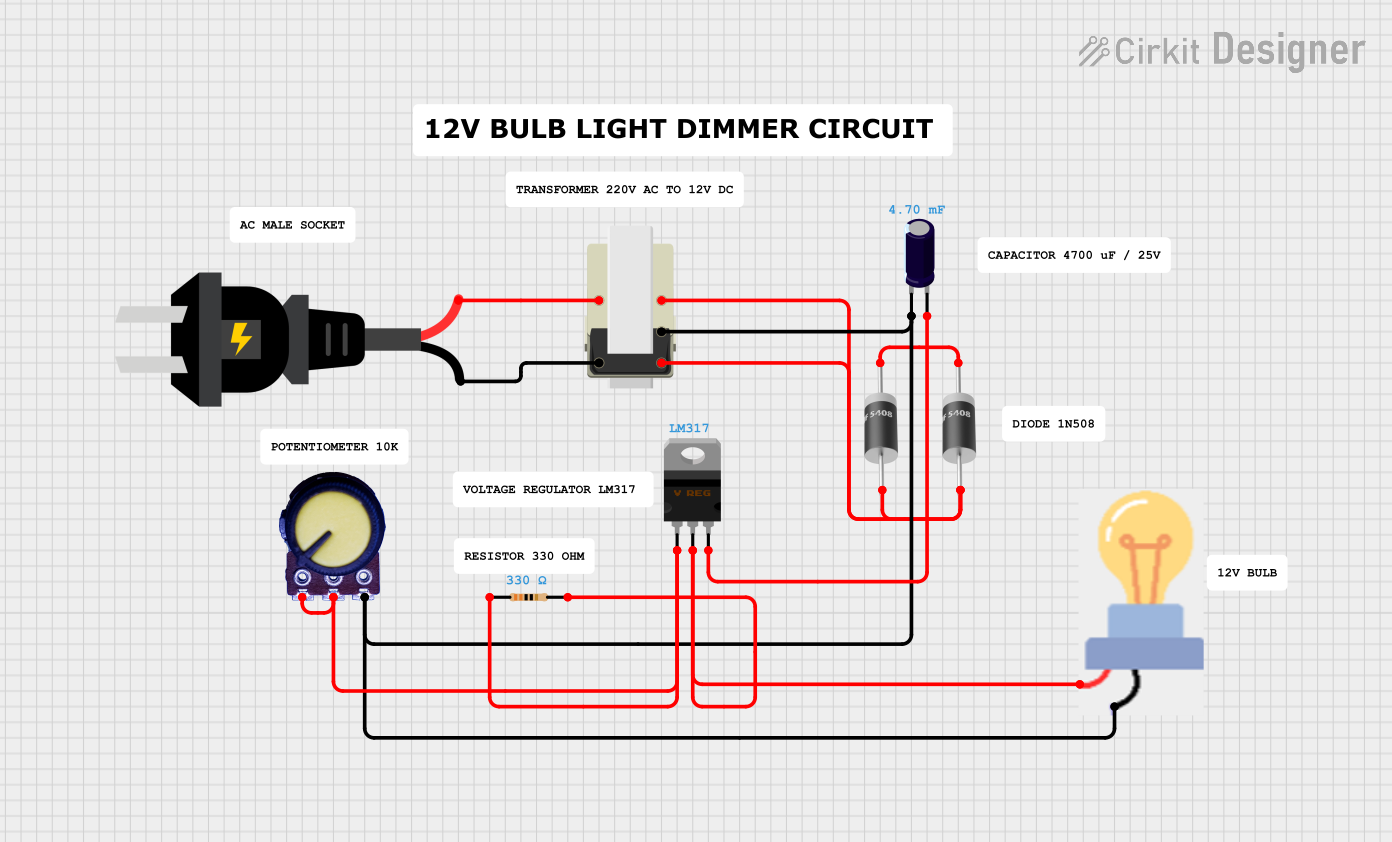
 Open Project in Cirkit Designer
Open Project in Cirkit DesignerExplore Projects Built with 3.3V Regulator

 Open Project in Cirkit Designer
Open Project in Cirkit Designer
 Open Project in Cirkit Designer
Open Project in Cirkit Designer
 Open Project in Cirkit Designer
Open Project in Cirkit Designer
 Open Project in Cirkit Designer
Open Project in Cirkit DesignerCommon Applications and Use Cases
- Powering microcontrollers (e.g., ESP8266, ESP32) and other 3.3V logic devices
- Supplying voltage to sensors and modules in IoT projects
- Voltage regulation in battery-powered devices
- Ensuring stable operation of communication modules (e.g., Bluetooth, Wi-Fi, GSM)
Technical Specifications
Below are the key technical details for a typical 3.3V linear voltage regulator (e.g., LM1117-3.3 or AMS1117-3.3):
| Parameter | Value |
|---|---|
| Output Voltage | 3.3V ± 1% |
| Input Voltage Range | 4.5V to 15V |
| Maximum Output Current | 800mA to 1A (depending on model) |
| Dropout Voltage | ~1.1V at 800mA load |
| Quiescent Current | ~5mA |
| Operating Temperature | -40°C to +125°C |
| Package Types | TO-220, SOT-223, TO-252, etc. |
Pin Configuration and Descriptions
The pinout for a common 3.3V regulator (e.g., AMS1117-3.3) is as follows:
| Pin Number | Pin Name | Description |
|---|---|---|
| 1 | Input (VIN) | Connect to the unregulated input voltage source. |
| 2 | Ground (GND) | Connect to the circuit ground. |
| 3 | Output (VOUT) | Provides the regulated 3.3V output voltage. |
Usage Instructions
How to Use the 3.3V Regulator in a Circuit
- Input Voltage: Ensure the input voltage (VIN) is at least 1.1V higher than the desired output voltage (i.e., VIN ≥ 4.4V for a 3.3V output). This is necessary to account for the regulator's dropout voltage.
- Capacitors: Add input and output capacitors to stabilize the regulator and reduce noise:
- Place a 10µF capacitor between VIN and GND.
- Place a 10µF capacitor between VOUT and GND.
- Connections:
- Connect the unregulated power source to the VIN pin.
- Connect the GND pin to the circuit ground.
- Connect the VOUT pin to the load requiring 3.3V.
Important Considerations and Best Practices
- Heat Dissipation: If the regulator is supplying a high current, it may generate heat. Use a heatsink or ensure proper ventilation to prevent overheating.
- Input Voltage Range: Do not exceed the maximum input voltage rating (typically 15V) to avoid damaging the regulator.
- Load Current: Ensure the load current does not exceed the regulator's maximum output current rating.
- Bypass Capacitors: Use low-ESR capacitors for better stability and noise reduction.
Example: Using a 3.3V Regulator with an Arduino UNO
Although the Arduino UNO operates at 5V, you can use a 3.3V regulator to power 3.3V peripherals. Below is an example of connecting a 3.3V sensor to an Arduino UNO using a 3.3V regulator.
Circuit Diagram
- Connect the VIN pin of the regulator to the Arduino's 5V pin.
- Connect the GND pin of the regulator to the Arduino's GND.
- Connect the VOUT pin of the regulator to the sensor's VCC pin.
- Connect the sensor's GND pin to the Arduino's GND.
Arduino Code Example
// Example code to read data from a 3.3V sensor connected to an Arduino UNO
const int sensorPin = A0; // Analog pin connected to the sensor output
void setup() {
Serial.begin(9600); // Initialize serial communication at 9600 baud
pinMode(sensorPin, INPUT); // Set the sensor pin as input
}
void loop() {
int sensorValue = analogRead(sensorPin); // Read the sensor value
float voltage = sensorValue * (5.0 / 1023.0);
// Convert the analog reading to voltage (UNO uses 5V reference)
Serial.print("Sensor Voltage: ");
Serial.print(voltage);
Serial.println(" V");
delay(1000); // Wait for 1 second before the next reading
}
Troubleshooting and FAQs
Common Issues and Solutions
No Output Voltage:
- Cause: Insufficient input voltage.
- Solution: Ensure the input voltage is at least 4.4V (for a typical dropout voltage of 1.1V).
Overheating:
- Cause: Excessive load current or high input voltage.
- Solution: Use a heatsink or reduce the load current. Ensure the input voltage is within the recommended range.
Unstable Output Voltage:
- Cause: Missing or inadequate capacitors.
- Solution: Add a 10µF capacitor to both the input and output pins.
Regulator Damage:
- Cause: Input voltage exceeds the maximum rating.
- Solution: Verify the input voltage and ensure it does not exceed the regulator's maximum rating.
FAQs
Q1: Can I use a 3.3V regulator with a 3.7V Li-ion battery?
A1: Yes, but only if the battery voltage is above the dropout voltage (typically 4.4V). Otherwise, the regulator may not provide a stable 3.3V output.
Q2: What type of capacitors should I use with the regulator?
A2: Use low-ESR electrolytic or ceramic capacitors with a value of 10µF or higher for both input and output.
Q3: Can I use the 3.3V regulator to power a 5V device?
A3: No, the regulator is designed to provide a fixed 3.3V output. Using it to power a 5V device may result in malfunction or damage to the device.